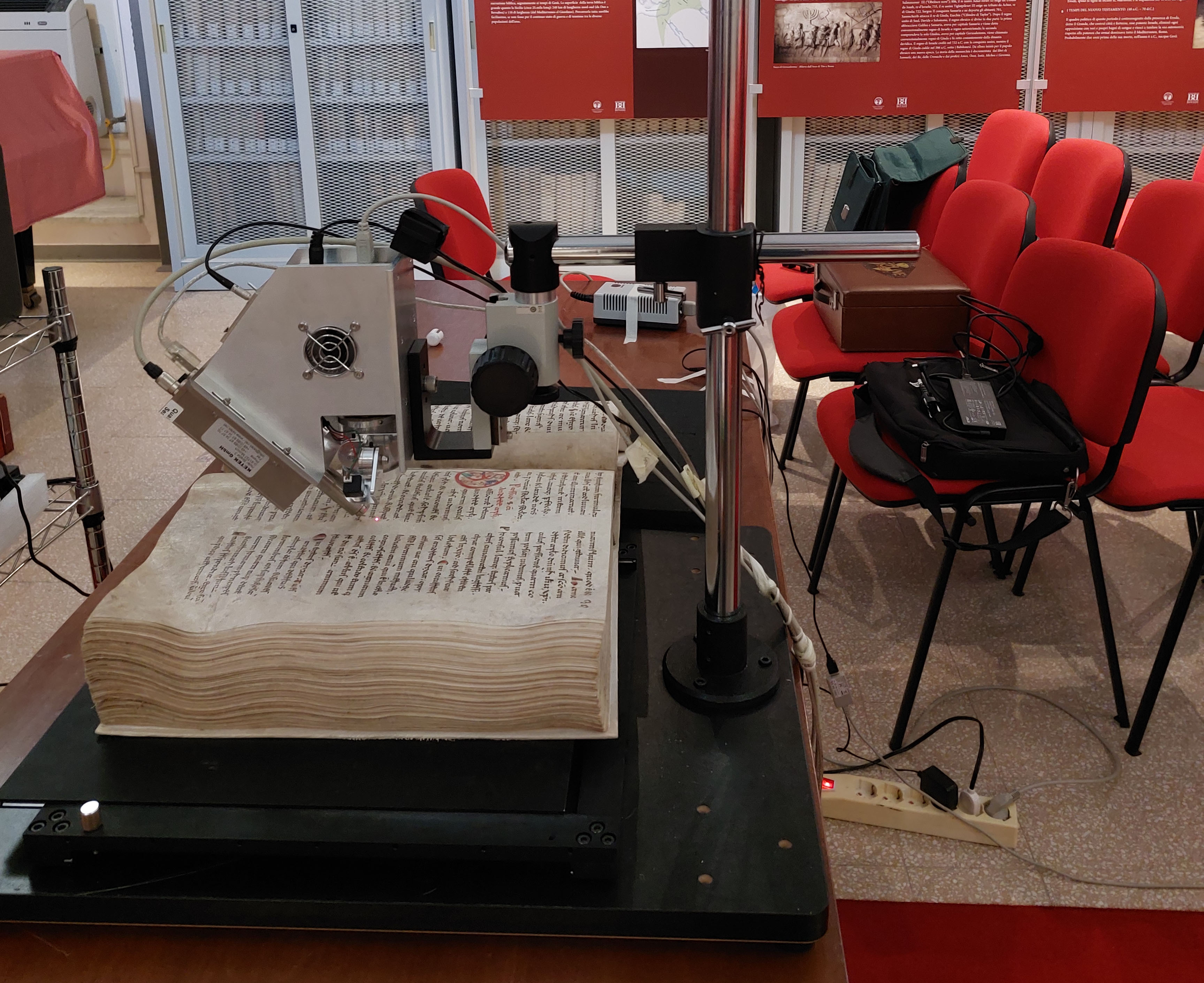Service: Portable X-Ray Fluorescence Spectrometry
Platforms
Molab
Techniques
X-ray fluorescence spectroscopy (xrf)

Organization
Service contact persons
The portable X-Ray Fluorescence (XRF) technique is widely used in cultural heritage for non-destructive elemental analysis. It enables the examination of multiple points without damaging objects, distinguishes between different pigments on polychrome surfaces, and is useful for studying ancient metals and identifying various alloys.
The Portable X-Ray Fluorescence Spectrometry (XRF) available at MOLAB is designed for in situ, non-invasive analysis of various cultural heritage (CH) objects, including mural paintings, paintings, manuscripts, bronze statues, glass, and pottery. Specifically, for copper alloys, the instrument is calibrated to enable quantitative analysis of these materials. For glass samples, the technique provides a detailed investigation of the chromophores present. The analysis can be conducted using different collimators, depending on the area to be investigated, as well as various filters. The instrument's efficiency allows for the analysis of elements with atomic numbers (Z) ranging from 47 (Ag) to 56 (Ba).
The limitations could be due to the specific regulations of the European country for protection against the dangers arising from exposure to ionising radiation, as the instrument is capable of operating at high voltage (70 kV).
Fields of application
Archaeometry
Chemistry
Conservation science (cultural heritage discipline)
Heritage science (cultural heritage discipline)
Materials science
Materials
Copper alloy
Inorganic material
Statuary bronze
Inorganic pigment
Alloy
Other information
-
Input: Imaging/photographic (Vis, UV, NIR) documentation available from the users (jpg, tiff)
-
Output: Ascii/CSV files, complete MOVIDA file with measuring points, metadata (experimental conditions, comments relative to the point), data interpretation.

